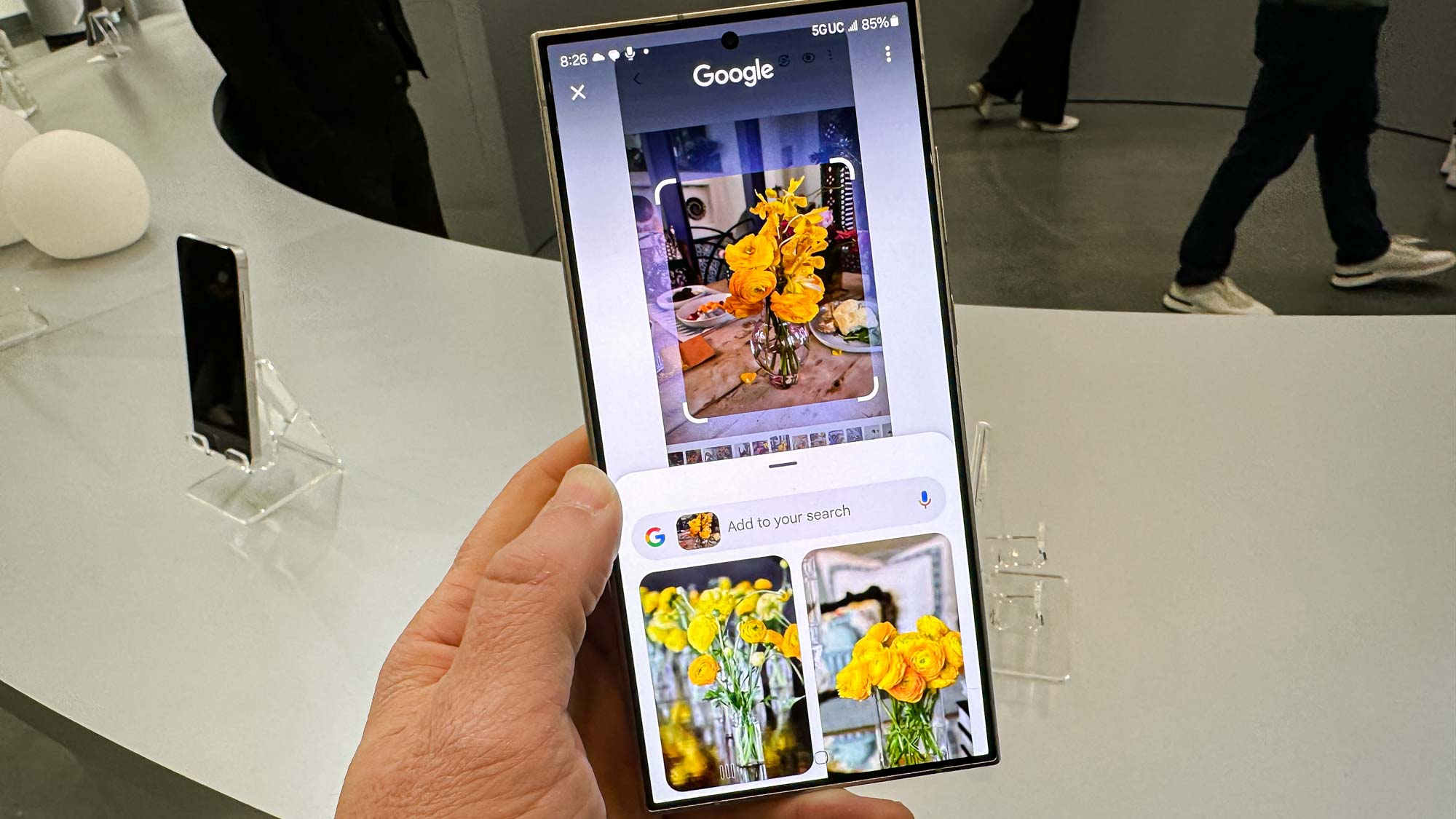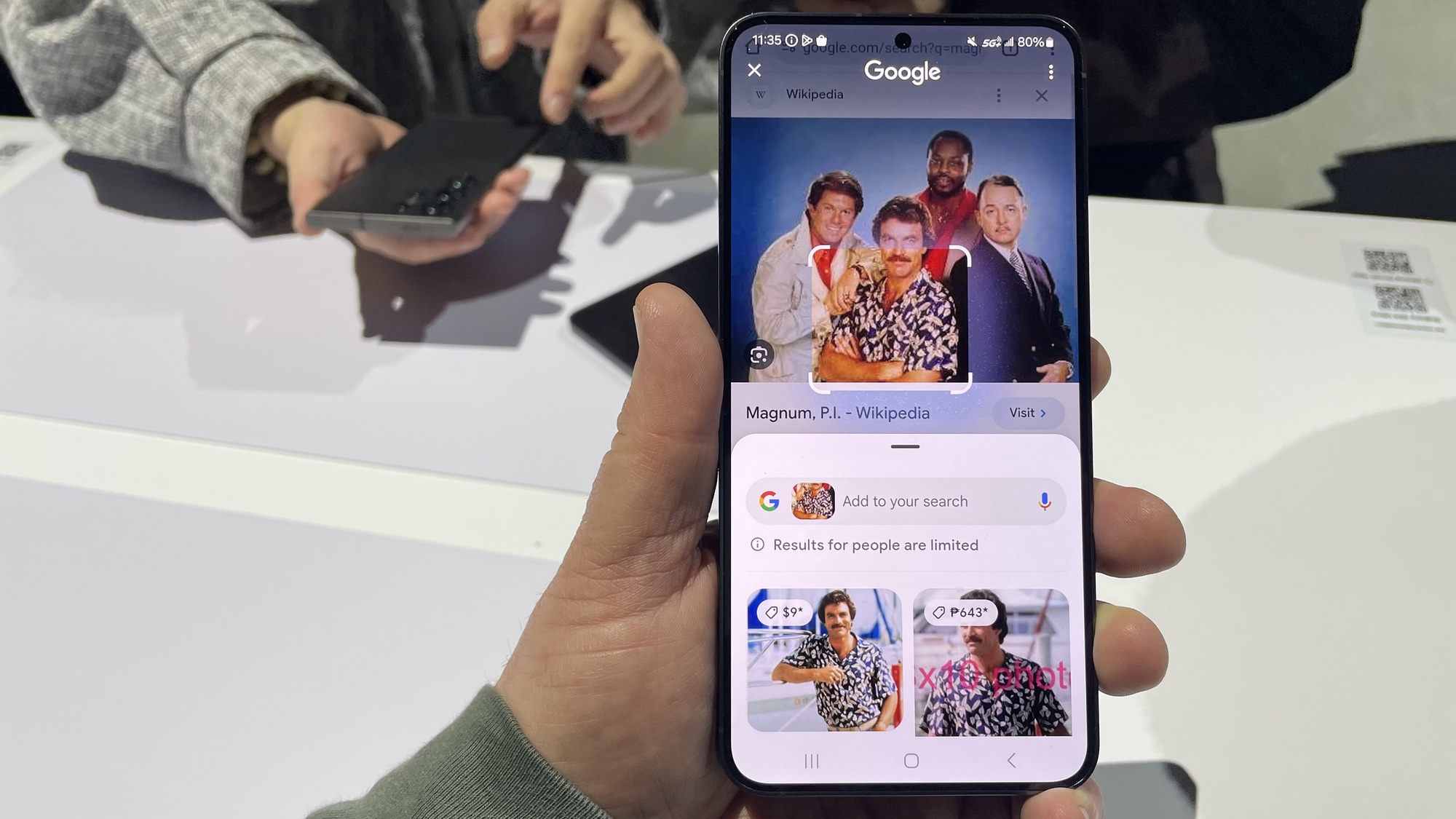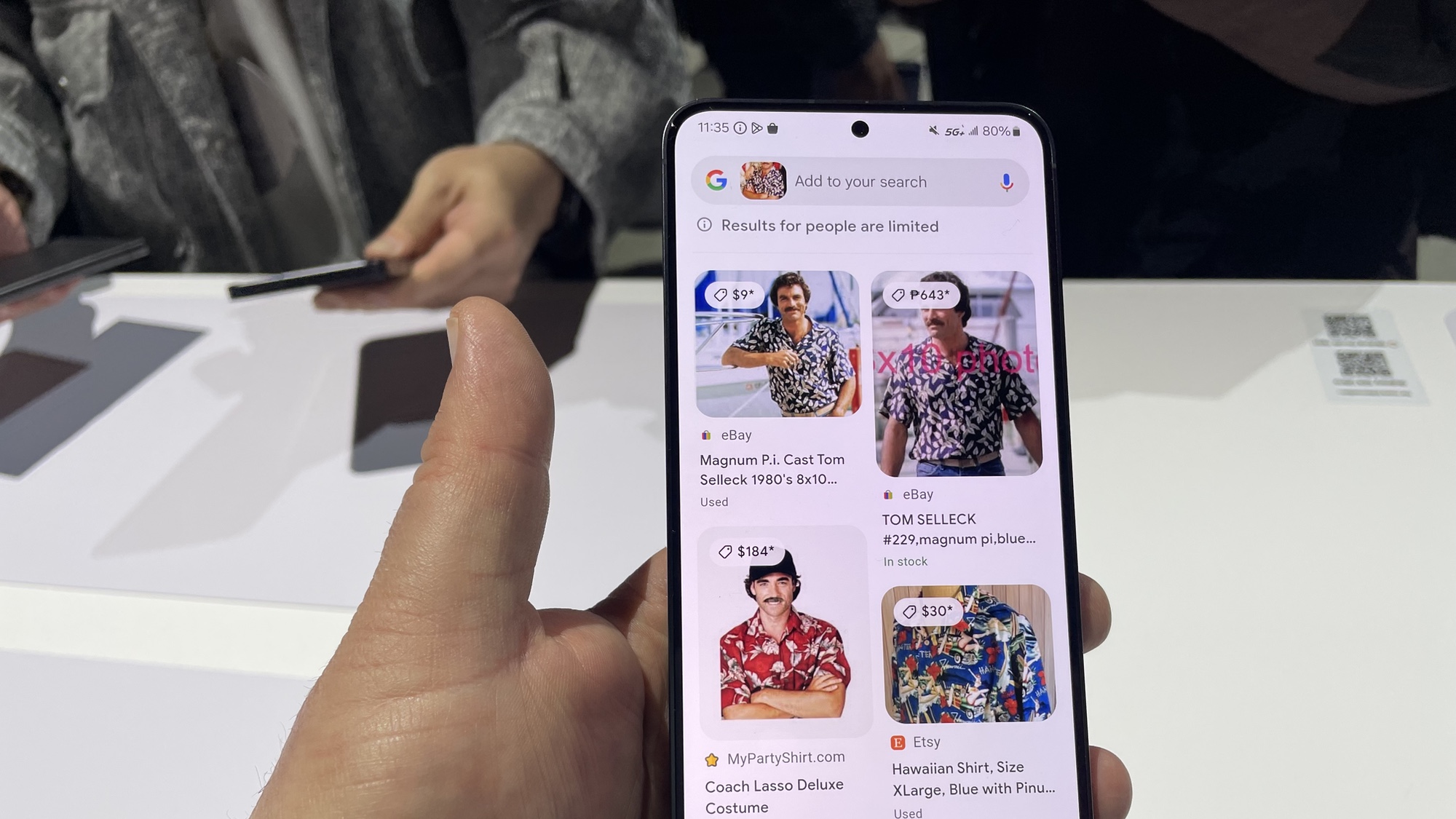Circle to Search is my favorite Galaxy S24 feature — if Samsung and Google don’t screw it up

Of all the Galaxy AI features Samsung has packed into the new Galaxy S24 phones — and the list is quite extensive — few impressed me more than Circle to Search. It's a tool that works exactly how you think it would and delivers precisely what it's supposed to.
There's no learning curve to Circle to Search, other than remembering that you activate with a long press of the home button. From there, it's simply a matter of drawing a circle or tapping an image you want to find out more about. It's basically the equivalent of pointing at something and shouting "tell me what that is," and a helpful person popping up out nowhere to provide you an answer. The difference is, all this is happening on your phone.
For that reason, Circle to Search is going to be a tool we all use. Well, those of us who have either a Galaxy S24 model or a Pixel 8 will, anyway. (Samsung developed Circle to Search with Google, so that company's flagship phones are getting the feature, too, via a software update.) It's a very natural extension of your phone's search capabilties.
But as much as I appreciate Circle to Search, it's a feature that's going to have to evolve beyond its current use cases. And it's going to require some work — particularly on Google's side — to make sure that it's delivering helpful results.
Meet Circle to Search

I had a chance to test out many of the new Galaxy AI features during the Galaxy S24 launch event last week in San Jose. Using a Galaxy 24 Plus while browsing the web in the built-in Chrome app, I came across a news article about whale migrations. Pressing the home button and then tapping on a picture of a whale in the article summoned a search pane from the bottom of the screen containing links and information about whales, such as facts about the particular species and other related news articles.
A second demo produced search results geared toward online shopping, as I circled a Hawaiian shirt in a cast photo from the original Magnum PI TV series and was treated to a pop-up panel with shopping links to Hawaiian shirts with similar colors and patterns.
Besides the simplicity of launching a Circle to Search experience, the real value of the feature is that window that slides up. You're not leaping to a different app to conduct your search or to look at results — you stay exactly where you are on the phone, and when you're done, you can dismiss the search results panel and resume with whatever it is you were doing in the first place, whether it's reading that whale migration article or admiring the wardrobe of 1980s TV detectives.
Get instant access to breaking news, the hottest reviews, great deals and helpful tips.
When you've circled a search topic, a search field appears with a thumbnail of your image and the ability to add more search terms. I like this ideal behind feature, too, as it should let you further refine your searches and not just provide visual input. (I haven't had a chance to test this more formally yet, but the ability to bring in other search terms is a welcome addition.)
Circle to Search -- what's not to like

If I have a concern about Circle to Search, it's that right now the search feature seems geared toward e-commerce. And that makes sense, as you're likely to tap and circle things to find out more about them because you're either struck by their look or because you'd like to own something similar.
As someone who's regularly steering people toward the best phone deals, I have no particular beef with money changing hands for goods or services. But if that's all that Circle to Search winds up enabling, I think it's going to be a missed opportunity.
Fortunately, I think Samsung feels that way, too. When I brought up my concern to Sally Hyesoon Jeong, a vice president at Samsung, she spoke about the ways Circle to Search could evolve over time, with one future goal being that users will be able to tap into feature for follow-up questions that help them further refine the results that turn up. There's also the likelihood that Circle to Search gets optimized for other types of devices — think Samsung's line of foldable phones — so that the search capabilities take the unique form factors and multitasking tools of those devices into account.
Personally, I could see Circle to Search become a valuable tool for travel, letting you use the ability to tap and circle objects on your phone's screen to pull up information about landmarks and tourist spots. It could also be a handy to summon up menus, reviews and — e-commerce alert! — specials and deals when you're out and about and looking for a place to eat.
The other big concern with Circle to Search is that the result it's turning up prove to be valuable. That's no idle worry, either. Just recently, we've a German study conclude that Google Search results are increasingly becoming littered with spam and link farms, a problem that AI-generated content only figures to make worse. Speaking of AI-generated articles, a report by 404 Media finds that Google News is increasingly surfacing articles that are simply AI-produced rip-offs of other people's work.
That's a problem for search in general and Circle to Search in particular. What value is there to easier access to search results if the results are largely garbage?
Circle to Search outlook
But that's an issue for Google to tackle over time. Right now, we can simply appreciate Circle to Search for being one of the best new additions to the Galaxy S24.
Is Circle to Search reason enough to buy the Galaxy S24 on its own? Probably not. But throw in the other AI capabilities plus the modest hardware improvements, and you can certainly make the case that the S24 is a big step forward for Samsung's flagship phones.
More from Tom's Guide
- Samsung Galaxy S24 hands-on review
- Samsung Galaxy S24 Ultra marks the end of an era — here's why
- I’ve spent 48 hours with the Galaxy S24 Ultra — what I like and what I don’t
Philip Michaels is a Managing Editor at Tom's Guide. He's been covering personal technology since 1999 and was in the building when Steve Jobs showed off the iPhone for the first time. He's been evaluating smartphones since that first iPhone debuted in 2007, and he's been following phone carriers and smartphone plans since 2015. He has strong opinions about Apple, the Oakland Athletics, old movies and proper butchery techniques. Follow him at @PhilipMichaels.

